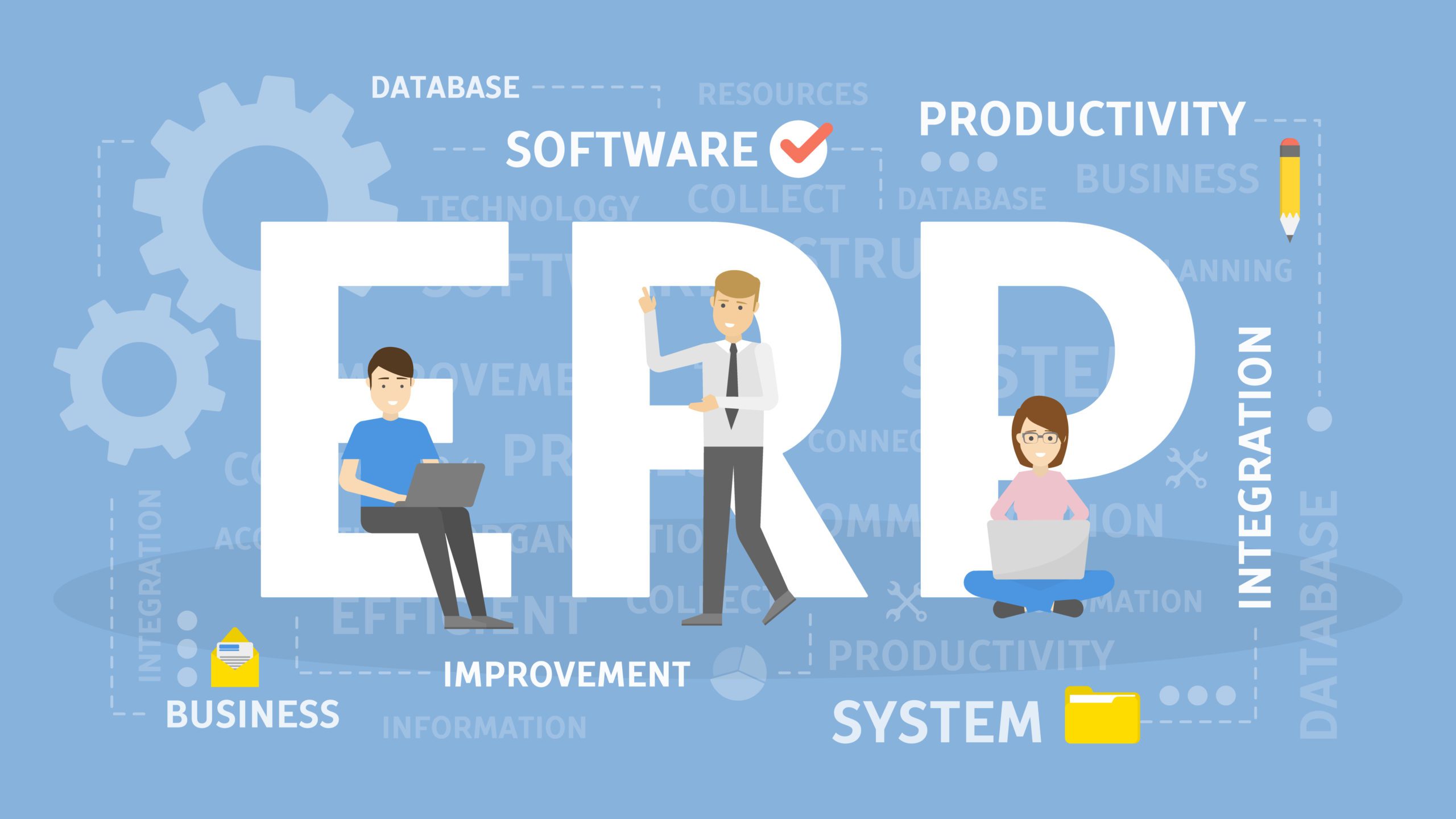How To Create Erp Software In Java

ERP Software reviewed by Web Webster
Enterprise resource planning (ERP) is business process management software that allows an organization to use a system of integrated applications to manage the business and automate many back office functions related to technology, services and human resources.
Enterprise resource planning software typically integrates all facets of an operation — including product planning, development, manufacturing, sales and marketing — in a single database, application and user interface.
ERP is an enterprise application
ERP software is considered to be a type of enterprise application, that is software designed to be used by larger businesses and often requires dedicated teams to customize and analyze the data and to handle upgrades and deployment. In contrast, small business ERP applications are lightweight business management software solutions, often customized for a specific business industry or vertical.
Today most organizations implement ERP systems to replace legacy software or to incorporate ERP applications because no system currently exists. In fact, a 2016 study by Panorama Consulting Solutions, LLC., indicates that organizations implement ERP for these top reasons:
- Out-of-date ERP software (49%)
- Homegrown systems (16%)
- Accounting software (15%)
- Other non-ERP systems / had no system (20%)
Top ERP Systems
Oracle Netsuite ERP
- Market-leading cloud EPR solution. Modern and scalable implementation across all critical back office functions.
- Features: Accounting, Inventory Management, Reporting & Analytics, Functionality across enterprises of all sizes.
- Pricing: Starting at $999/month
SAP ERP
- Trusted ERP provider with 40 years of market history and more than 50,000 customers worldwide.
- Features: Accounting, Inventory & Warehouse Management, Purchasing, Reporting & Analytics Functionality across enterprises of all sizes.
- Pricing: Variable ($20k+)
Sage ERP
- Fully-integrated, comprehensive suite of EPR business tools and capacity across all back office functions.
- Features: Financial Cloud, Accounting, Inventory & Warehouse Management, Procurement, Reporting & Analytics, Functionality across enterprises of all functions.
- Pricing: Variable ($15k+)
For guidance on what to look for when considering your ERP options, see TechnologyAdvice's Guide To ERP Software.
ERP software modules explained
ERP software typically consists of multiple enterprise software modules that are individually purchased, based on what best meets the specific needs and technical capabilities of the organization. Each ERP module is focused on one area of business processes, such as product development or marketing.
Recommended Reading: The Difference Between CRM and ERP
Some of the most common ERP modules include those for product planning, material purchasing, inventory control, distribution, accounting, marketing, finance and HR. A business will typically use a combination of different modules to manage back-office activities and tasks including the following:
- Distribution process management
- Supply chain management
- Services knowledge base
- Configure prices
- Improve accuracy of financial data
- Facilitate better project planning
- Automate the employee life-cycle
- Standardize critical business procedures
- Reduce redundant tasks
- Assess business needs
- Accounting and financial applications
- Lower purchasing costs
- Manage human resources and payroll
As the ERP methodology has become more popular, software applications have emerged to help business managers implement ERP in to other business activities and may incorporate modules for CRM and business intelligence, presenting it as a single unified package.
The basic goal of using an enterprise resource planning system is to provide one central repository for all information that is shared by all the various ERP facets to improve the flow of data across the organization.
Enterprise ERP trends
The ERP field can be slow to change, but the last couple of years have unleashed new technology trends which are fundamentally shifting the entire area. The following new and continuing computing trends have an impact on the growth of enterprise ERP software:
Mobile ERP
Executives and employees want real-time access to information, regardless of where they are. It is expected that businesses will embrace mobile ERP for the reports, dashboards and to conduct key business processes.
Cloud ERP
The cloud has been advancing steadily into the enterprise for some time, but many ERP users have been reluctant to place data in the cloud. Those reservations have gradually been evaporating, however, as the advantages of the cloud become apparent.
Social ERP
There has been much hype around social media and how important —or not — it is to add to ERP systems. Certainly, vendors have been quick to seize the initiative, adding social media packages to their ERP systems with much fanfare. But some wonder if there is really much gain to be had by integrating social media with ERP.
Two-tier ERP
Enterprises once attempted to build all-encompassing ERP systems to take care of every aspect of organizational systems. However, some expensive failures have gradually brought about a change in strategy – adopting two tiers of ERP.
Depending on your organization's size and needs there are a number of enterprise resource planning software vendors to choose from in the large enterprise, mid-market and the small business ERP market. Gartner's annual market share reports put SAP, Oracle, Sage, Microsoft and NetSuite among the top vendors.
ERP FAQs
What are examples of ERP Software?
Some examples of ERP software providers include Oracle Netsuite ERP, SAP ERP, and Sage ERP. These vendors, along with their main features and pricing, are listed above.
Other examples of ERP software tools include Microsoft Dynamics, Infor, SYSPRO, IFS Applications, and Macola. To compare these products and their core capabilities, check out this ERP buyer's guide.
Examples of ERP software uses
Since an ERP tool has a variety of use cases, multiple parts of a company can benefit from it.
Here's a few specific use cases in which an ERP system proves valuable:
– Finances: All accounts receivable and accounts payable transactions are recorded automatically. The general ledger is fully managed, and executives have an aggregated view of the company's finances.
– Purchasing: The purchasing process can be automated. Requests for quotes can be automatically sent and stored, and purchase orders can be issued.
– Customer Relations: Many ERP systems have CRM features. Prospects can fill out a form on a distributor's site, allowing the distributor to collect data about the customer for future analysis.
– Project Management: Project management features within an ERP are highly valuable, considering how much information an ERP houses about the company. Users can quickly see project status, billing hours, expenses, and client communications.
– Ecommerce: ecommerce modules within an ERP tool allows products to be added and updated on a company's site. Order information, stock management, and other useful ecommerce tools are also available.
How much does ERP software cost?
The global ERP market has exploded over the past years, with it being projected to reach $86 million by 2027. Because of this, there are many vendors in the market, meaning there are lots of options for both single license and subscription SaaS products in varying price ranges.
Depending on the needs of the company, an ERP tool can range from a few dollars per user, per month for SMBs to thousands of dollars a month for enterprises. There's two general types of pricing models:
– Perpetual licensing: A one-time cost paid up front and is based on the number of users and level of customization. Perpetual licenses typically don't include recurring costs like maintenance support and upgrade.
– Subscription licensing: This Software-as-a-Service (SaaS) model has fees that are paid per user monthly or annually. A subscription plan typically includes a minimum contract length and comes in various pricing levels with increasing functionality and modules.
The licensing cost of ERP software is not the total amount paid. Implementation costs are a significant consideration in overall budget because it can dramatically influence the expense. Major implementation costs include:
– Any modules not included in base price of software
– Customization
– Consultants
– Hardware
– Training
An ERP implementation can cost anything between $150,000 and $750,000, with the possibility of a higher number for enterprises. For businesses unable to pay this for implementation, a cloud-based ERP tool is advised, as that eliminates hardware costs.
What is the difference between MRP and ERP software?
Materials requirement planning (MRP) software is widely used in the manufacturing industry for production planning, scheduling, and inventory management. It helps companies gain control over their manufacturing materials and planning processes by allowing manufacturers the ability to calculate what materials they require, in what quantities, and at what time.
MRP software is generally considered to be a subset of ERP software, so there are a lot of similar features between the two. But ERP software is much more complex, while MRP software is more specific to the manufacturing process.
Here's a quick list differentiating between the two.
ERP distinguishing features
– Used for integrating and managing main business practices to streamline information and processes across the entire organization
– Used with any department such as HR, sales, logistics, etc.
– Can manage large numbers of projects at a time
– Can include features such as marketing automation, email marketing, customer help desks, etc.
– More expensive and expansive than an MRP
MRP distinguishing features
– Used for managing manufacturing processes for planning, scheduling, and control over materials
– Specifically designed for the manufacturing industry
– Generally handles smaller projects—is overall a simpler software
– Doesn't include customer-facing features
– Considered to be a subset of ERP, so is often included as a feature within ERP software

Vangie Beal
Vangie Beal is a freelance business and technology writer covering Internet technologies and online business since the late '90s.
How To Create Erp Software In Java
Source: https://www.webopedia.com/definitions/erp/
Posted by: leclaircamigat.blogspot.com

0 Response to "How To Create Erp Software In Java"
Post a Comment